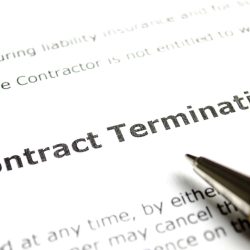In an old yet still iconic corporate governance “case of the century,” a shareholder derivative litigation in connection with Walt Disney Company’s hiring and subsequent termination of Michael Ovitz, we see that skimping on board minutes pertaining to important corporate decisions can result in extraordinarily costly and painful litigation.
A California for-profit corporation needs to perform certain critical tasks to maintain its good standing with state and federal authorities, avoid penalties, and preserve its separate existence as a legal entity. One of these tasks is to maintain “good” meeting minutes. But what distinguishes the “good” meeting minutes from the “bad” ones?
Corporate meeting minutes are an official and permanent record of the actions taken by a corporation’s governing body. Board minutes reflect the discussions held, authorizations granted, and actions taken by the board of directors. The California Corporations Code requires a corporation to keep minutes of the proceedings of the board of directors (Cal. Corp. Code § 1500). Most other states are like California, and have laws on the books that require corporations to keep meeting minutes with other corporate documents and records. Yet, a handful of states leave the responsibility for recording and retaining minutes up to the corporations, some of these states include Delaware and Nevada.
While there is no single correct method of drafting and taking meeting minutes, there are certain things that your corporate meeting minutes should include to make them among the “good” ones that will give you the most legal protection if and when a problem arises. Good corporate board meeting minutes are more than a general accounting of board discussions; they serve as an official and legal record of the meeting of the board of directors. The corporate secretary should presume that minutes of board meetings may be produced in litigation. Therefore, it is critical that the secretary ensures that the meeting minutes contain the elements that satisfy the legal test for privilege or confidentiality.
One of the key purposes of corporate minutes is to provide direct evidence of the facts described in them, such as:
- Delegation of authority from the board of directors to corporate officers.
- Corporate approval of the actions taken, such as approval of transactions with third parties.
- Satisfying the business judgment rule and offering documentation to support directors’ duty of care by indicating the information that was presented to the directors and that they discussed the matters fully.
- the date, location and start time of the meeting;
- the type of meeting (regularly scheduled or special or executive session);
- whether the meeting is in person or telephonic;
- a preliminary list of directors expected to be present at the meeting;
- whether a quorum of directors is to be present;
- the name of the person serving as secretary of meeting;
- approval of the minutes of the previous meeting; and
- the matters to be discussed or approved at the meeting.
- approving or ratifying major contracts;
- transferring or assigning personal obligations to the corporation;
- electing officers;
- electing directors;
- hiring key employees;
- approving or ratifying significant loans or other indebtedness; and
- qualifying the corporation to do business in other jurisdictions;
- updating any organizational changes in the management or ownership of the business, including:
- principal business office;
- new business offices;
- directors;
- committees;
- officers; and
- shareholders
- Forgetting to take attendance and making sure that a quorum is present
- Inaccurate or incomplete record of corporate decisions
- Failing to record executive sessions





